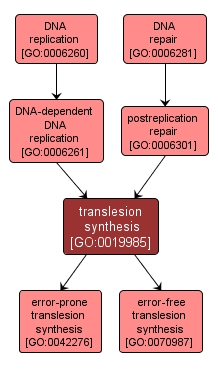| Desc: |
The replication of damaged DNA by synthesis across a lesion in the template strand; a specialized DNA polymerase or replication complex inserts a defined nucleotide across from the lesion which allows DNA synthesis to continue beyond the lesion. This process can be mutagenic depending on the damaged nucleotide and the inserted nucleotide. |














